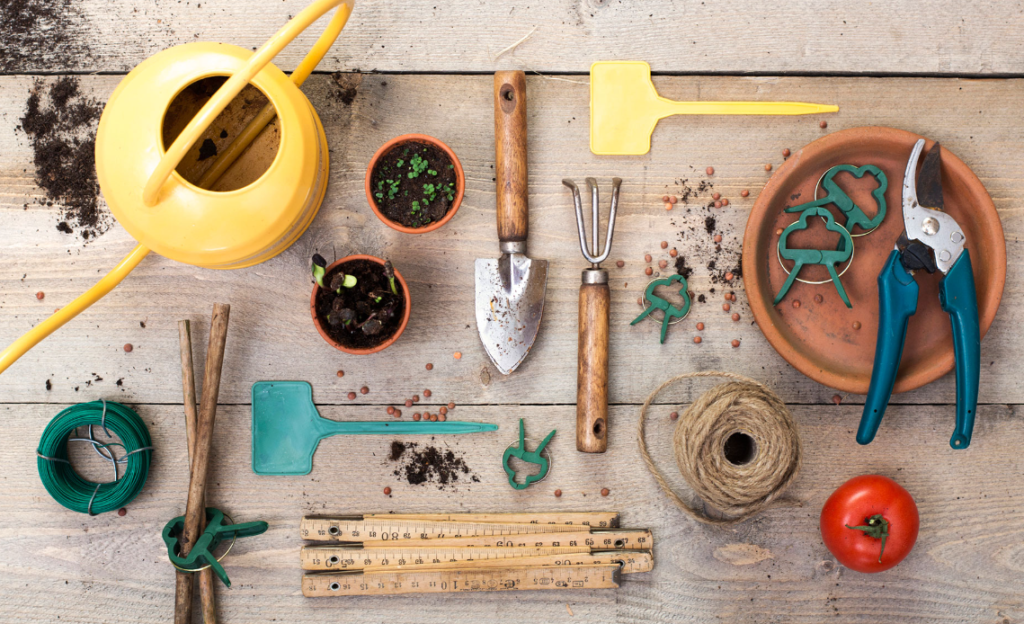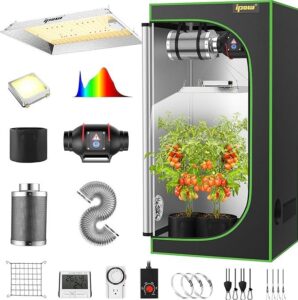Disclaimer: We may earn revenue from the products available on this page and participate in affiliate programs. Learn More
By 2027, the legal cannabis market in the U.S. and Canada is projected to soar to a staggering $47.3 billion, surpassing the combined annual global sales of raw metals like nickel and silver, making it even larger than the North American pork market. However, while the fundamental mechanics of mining or ranching are widely understood, cannabis, and its intricacies, remain relatively unfamiliar to most.

What is a Cannabis Plant?
The cannabis plant is a botanical species of plant under the Cannabis genus category. Within this genus, two prominent subspecies emerge: Cannabis sativa and Cannabis indica. These plants have an intricate chemical composition, including cannabinoids and terpenes. Notably, the cannabis plant is famous for its psychoactive effects, primarily attributed to the presence of THC (delta-9-tetrahydrocannabinol). It’s essential to understand that cannabis is appreciated for its diverse applications, from medicinal to recreational use, making it a subject of significant interest and research.
How is Cannabis Different than Hemp?
Distinguishing cannabis from hemp is crucial. While both belong to the Cannabis family, they serve disparate purposes due to their distinct chemical profiles. Hemp, also referred to as industrial hemp, is a specific cannabis variety with remarkably low THC levels, typically measuring below 0.3%. This stark contrast in THC content sets hemp apart from cannabis. Hemp’s primary role lies in its extensive industrial applications, including the production of textiles, paper, and extraction of CBD. Notably, hemp is not known for its psychoactive effects, making it a non-intoxicating and resourceful plant, whereas cannabis is appreciated for its psychoactive properties, often used recreationally or medicinally. These differences in chemical composition, purpose, and applications underscore the critical distinctions between cannabis and hemp, despite their shared botanical heritage.
Plant Anatomy
Commercial cannabis primarily originates from the female cannabis species, characterized by slender stems and large iconic fan leaves. Plants are meticulously trimmed to create buds that coalesce into a cola at the apex of the stem. A blanket of crystal resin, known as trichomes, envelops the cannabis plant, housing both terpenes and cannabinoids.
Cannabinoids
The two most renowned cannabinoids, THC and CBD, dominate in terms of volume. Delta-9-tetrahydrocannabinol (THC) is the compound responsible for the psychoactive “high” associated with cannabis, offering various benefits such as pain relief, anti-nausea, sleep aid, appetite stimulation, and mood enhancement. On the other hand, Cannabidiol (CBD) is distinguished by its lack of psychoactive effects, making it a preferred medicinal option for pain relief, anti-nausea, anti-inflammatory properties, anxiety reduction, and seizure control. Additionally, other cannabinoids, including cannabichromene (CBC), cannabigerol (CBG), and cannabinol (CBN), exhibit similar therapeutic qualities, with ongoing research validating their effectiveness in treating conditions such as cancer, multiple sclerosis, PTSD, and Alzheimer’s.
Learn more about the difference between CBD and THC in my full article:
Terpenes
Terpenes, aromatic organic compounds present in the oils of all flowers, including cannabis, possess distinct medical potential. These terpenes, in synergy with cannabinoids, create the “entourage effect,” enhancing the plant’s medical properties.
Sativa, Indica, Hybrid
Cannabis plants typically fall into two common categories: sativa and indica. Sativa plants are characterized by long, slender, light-colored leaves, wispy buds with red or orange hues, and higher THC and lower CBD levels. They are ideal for daytime use, known for their energizing, stimulating, and creative effects. In contrast, indica plants sport broad, deep-colored leaves, densely packed buds with purple tints, and medium THC levels with higher CBD content, delivering calming and relaxing effects, making them more suitable for nighttime use. It’s essential to acknowledge hybrid strains that blend the best qualities of both into a single plant.

The Lifecycle of a Cannabis Plant
Each stage of a cannabis plant’s growth demands specific care:
- Germination (Seed): 1-2 weeks
- Encourage sprouting by watering seeds placed in a paper towel.
- Seedling: 2-3 weeks
- Transition seeds into a growing medium, providing maximum light and appropriate watering.
- Cotyledon (seed leaves) grow and the iconic fan leaves can be observed.
- Light: 18-24 hours
- Humidity: 70%
- Temperature: 20-25°C
- Vegetative: 2-8 weeks
- Ensure flowing dry air, fresh warm water, and increased nutrient supply, especially nitrogen.
- Separation of male and female plants before pollination is vital to prevent female plants from producing seeds instead of trichomes.
- Light: 12 hours of sunlight (or 18 hours of fluorescent light)
- Humidity: 50%
- Temperature: 20-24°C
- Flowering: 6-8 weeks
- Gradually reduce light exposure to enhance medicinal qualities.
- Adjust phosphorus levels while decreasing nitrogen.
- Fertilizers can stimulate bud formation.
- Light: 12 hours
- Humidity: 40-50%
- Temperature: 20-28°C
- Harvesting
- Trim and dry the buds; the plant is ready when buds transition from milky white to reddish orange.
- Optimal harvest time is when 70-90% of pistils have turned brown for maximum flavor and effect.
- Humidity: 50%
- Temperature: 20-25°C
As the industry continues to evolve, consumers are increasingly demanding high-quality products. The importance of natural and eco-friendly cannabis cultivation methods becomes paramount in delivering a premium product.
Tools Required for Growing Cannabis

To embark on the journey of cultivating cannabis successfully, you’ll need a set of essential tools and equipment. These tools play a pivotal role in ensuring the health and vitality of your cannabis plants. Here’s a breakdown of the tools required for growing cannabis:
1. Grow Lights: High-quality grow lights are crucial, especially if you’re cultivating indoors. LED, HPS (High-Pressure Sodium), and fluorescent lights are popular choices, as they provide the necessary light spectrum for different growth stages.
2. Growing Medium: Your choice of growing medium is vital. Options include soil, coco coir, or hydroponic systems. The medium should be well-draining, retain moisture, and allow for proper root aeration.
3. Pots or Containers: Select pots or containers that provide adequate space for root growth. Fabric pots work great, they are breathable and prevent overwatering.
4. Nutrients: Cannabis plants require a specific balance of nutrients during various growth stages. Look for quality fertilizers, both organic and synthetic, to cater to your plant’s needs.
5. pH Testing Kit: Maintaining the right pH levels in your growing medium is essential for nutrient uptake. Invest in a pH testing kit to monitor and adjust pH as needed.
6. Temperature and Humidity Control: Cannabis plants thrive within specific temperature and humidity ranges. To ensure optimal conditions, you may need fans, heaters, and humidifiers or dehumidifiers, depending on your grow environment.
7. Ventilation System: Proper ventilation is crucial for regulating temperature and humidity, preventing mold, and ensuring a fresh air supply. Exhaust fans and carbon filters can help maintain a healthy atmosphere.
8. Hydrometer: A hydrometer or digital hygrometer is essential for monitoring the humidity levels in your grow space.
9. Pruning and Trimming Tools: Trimming and pruning your cannabis plants as they grow is vital for airflow and optimal bud development. Pruning shears and trimming scissors are necessary tools for this purpose.
10. Trellis or Netting: To support the weight of your cannabis plants and ensure even light distribution, consider using a trellis or netting.
11. pH Adjusters: pH adjusters, such as pH up and pH down solutions, are essential for maintaining the correct pH levels in your water and nutrient solutions.
12. Watering System: Consistent and controlled watering is vital. You can use watering cans, drip systems, or irrigation equipment to ensure your plants receive the right amount of water.
13. Pest Control Products: Prepare to combat pests and diseases that may threaten your cannabis plants. Organic and chemical pest control products can help safeguard your crop.
14. Storage Containers: After harvesting, proper storage is crucial to maintain the quality of your product. Glass jars, airtight containers, and humidity packs can help preserve the freshness and potency of your buds.
Equip yourself with the essential tools you need to start your cannabis cultivation journey. Properly maintained tools are key to ensuring the health and vitality of your cannabis plants, leading to a successful and rewarding harvest.

Get Started with a Hydro Grow Tent Kit:
Conclusion
The cannabis plant’s anatomy, cannabinoids, terpenes, and the intricacies of its growth stages offer a fascinating insight into this burgeoning industry. With the projected growth of the legal cannabis market, understanding these fundamentals is becoming increasingly vital. Whether for recreational or medicinal use, this knowledge empowers individuals to make informed choices and supports the drive for high-quality, sustainable products.
FAQ
Q1: What are terpenes, and how do they enhance the cannabis experience? Terpenes are organic compounds found in cannabis and other plants that contribute to their aroma and flavor. These compounds, in combination with cannabinoids, create the “entourage effect,” enhancing the medical properties and overall experience of cannabis.
Q2: What’s the difference between sativa and indica cannabis plants? Sativa plants typically have lighter leaves, high THC, and low CBD, offering energizing and creative effects, suitable for daytime use. Alternatively, indica plants have darker leaves, higher CBD, and are known for their relaxing and calming effects, making them ideal for nighttime use.
Q3: How can I tell when a cannabis plant is ready for harvest? Plants are typically ready for harvest when 70-90% of their pistils (hairs) have turned brown, and the buds have shifted from milky white to reddish orange. This ensures maximum flavor and potency.
Want to suggest a correction? Email us at feedback@greenstareducation.com